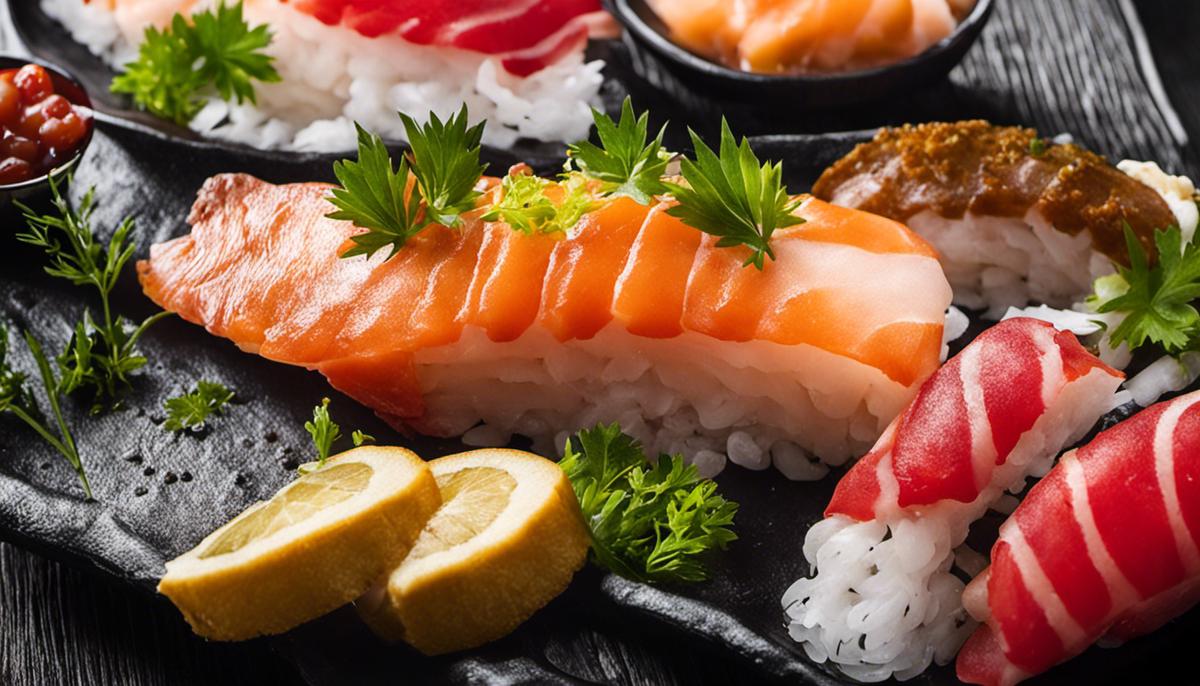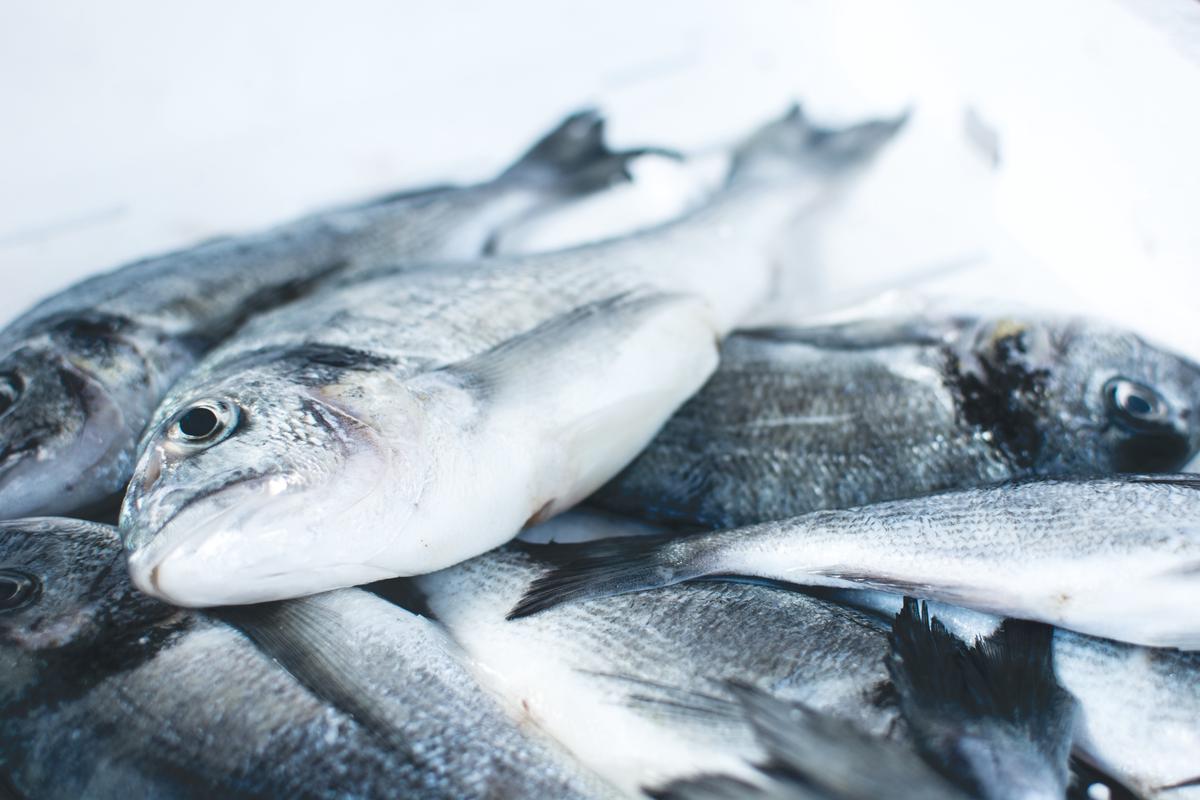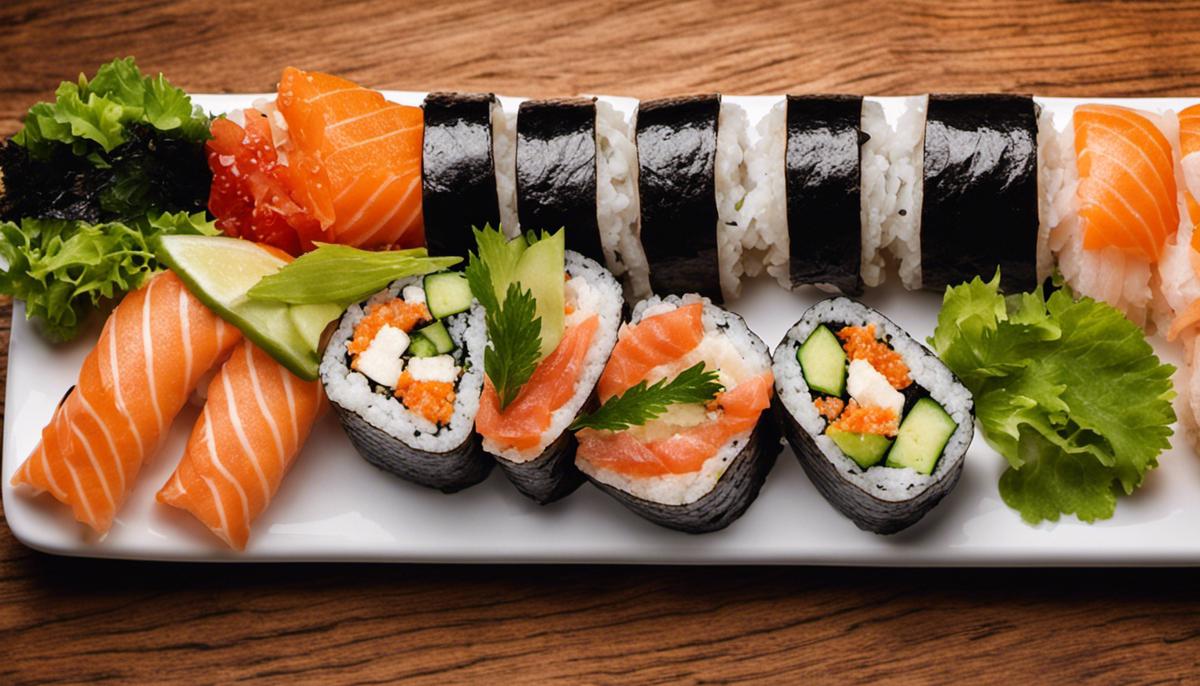There is a lot to discover and learn in the artful world of sushi. Especially the correct preparation of the fish is the most elaborate and valuable part of this traditional Japanese cuisine. This includes a number of important factors such as choosing the right fish, assessing its freshness, and working safely and hygienically with raw fish. It is these aspects that we will examine and get to know in detail. Additionally, we’ll take an in-depth look at the filleting techniques that are at the heart of preparing fish for sushi to achieve the optimal consistency and aesthetics for your homemade sushi.
Choosing the Right Fish
The art of sushi creation is impressive in both aesthetics and taste. An essential ingredient that determines the fine taste is undoubtedly the fish. Great attention is paid to the selection of the best and freshest fish. Here are some tips for successful selection.
- Freshness means everything: the freshness of the fish is the key to the perfect sushi experience. But how do you recognize fresh fish? A common method is to look at the eyes: they should be clear and shiny. In addition, the fish should smell good – fresh fish does not smell fishy, but fresh and oceanic.
- Sashimi Grade Fish: A key term for sushi is “sashimi-grade”, which means that the fish can be eaten raw. If the fish has this status, it meets the strict standards of freshness and quality. It is necessary to find a trustworthy supplier who specializes in “sashimi-grade” fish.
- The best types of fish: When it comes to sushi, tuna and salmon are the most popular types. These fish have a rich and smooth texture that makes them ideal for sushi. White fish such as flounder or sole is also a good choice.
- Preparing the fish: After the perfect fish has been chosen, it is important to treat it properly. The fish should be filleted properly and the bones removed.
- Fish from sustainable sources: With the increasing exploitation of the oceans, it is important to choose fish from sustainable sources. This is not only good for the planet, but also for the conscience. Certifications such as the MSC seal can help with the selection.
Taken together, these conclusive points form the basic rule of the selection process when preparing sushi – from choosing the right fish to the potential sustainability of its source. When preparing it, the aesthetics of the dish will be just as important as the taste of the fish used. These points should be thought about the next time you prepare sushi.

Safety Measures When Handling Raw Fish
Now that we’ve covered the selection and preparation of fish for sushi, let’s move on to the important safety measures when handling raw fish.
First and foremost, cleanliness is the be-all and end-all. Before coming into contact with the raw fish, your hands should be washed thoroughly – as well as all kitchen utensils that are in use. And let’s not forget to avoid contamination: when raw fish comes into contact with other foods, there is a risk of cross-contamination. So, we use separate cutting boards and knives for the fish and other foods.
Another important safety measure when handling raw fish is proper storage. Raw fish should always be kept well refrigerated, ideally at a temperature just above zero degrees Celsius. This reduces possible germ infestation and preserves the freshness of the fish for as long as possible.
Speaking of germs, there may be various parasites present in the fish. Therefore, we recommend pickling or freezing the fish before eating. During pickling, the acid from citrus fruits, together with salt and sugar, forms an invisible protective film on the fish, which kills any parasites that may be present. Freezing can also help kill parasites, as they usually can’t survive in extreme temperatures.
And while it may seem obvious, one more note: never eat fish that has an unpleasant or fishy smell. Fish should always have a fresh and pleasant smell of the sea. If your fish smells funny, it’s better to throw it away – safety always comes first.
We hope these tips will make it easier for you to make delicious and safe sushi at home. Always remember: safety measures are not only important to you, but also contribute to the enjoyment of your meal. So take the time to familiarize yourself with them and apply them. Because only those who know the rules can master them brilliantly and enjoy a delicious result!

Photo by foodiesfeed on Unsplash
Preparing and cutting fish
The art of sushi making is both timeless and endlessly fascinating, affecting not only the taste but also the aesthetics. Our next step is to take a closer look at the promising scenario of the fascination of sushi masters and to give concrete tips on how to prepare sushi .
One of the decisive factors in the preparation of sushi is impeccable hygiene. Handling raw fish requires careful cleanliness to prevent the transmission of bacteria. Therefore, it is imperative to thoroughly clean work surfaces, utensils and your hands before you start the process and often during it.
Another important aspect is the avoidance of cross-contamination. Therefore, you should always use separate cutting boards and knives for fish and other ingredients. After use, they should be thoroughly cleaned and disinfected .
Proper storage of raw fish is also crucial. Always store your raw fish in the refrigerator, preferably at 0 to 4 degrees Celsius to preserve freshness and prevent bacterial growth.
Now for the most exciting part: the actual preparation of your fish for sushi. Use a sharp knife to cut your fish into pieces of sashimi. The consistency of the fish can be significantly affected by this, the better your cutting technique, the finer the mouthfeel will be.
Handling raw fish can be challenging, and numerous methods, including pickling or freezing, not only increase safety but also flavor. Pickling the fish in a mixture of soy sauce, mirin, and sake can help kill germs and make the texture of the fish even more tender. Freezing is another method that effectively reduces bacteria and parasites, stabilizes the fish and extends its shelf life.
Ultimately, no factor is more important than paying attention to the freshness of the fish before consumption. A fresh fish smells like the sea and not fish. The flesh should be firm but elastic, the eyes clear and the skin moist.
The perfect composition of a sushi dish at home requires patience and practice. Whether you’re looking to create a simple nigiri or a more complex sushi roll, the use of fresh, high-quality fish is key to an unforgettable dining experience.
Isn’t that fascinating? Enjoy every detail of this journey into the art of sushi making. We hope that with these simple guidelines, you can whip up your own version of the perfect sushi dish. Good luck and, above all, bon appétit!

A deeper understanding of each technique and skills in preparing fish for sushi will allow you to achieve higher levels of quality expected from professional sushi kitchens. The ability to assess the freshness of a fish, handle it safely and skillfully fillet it opens up a wide field for culinary experimentation and creativity. With patience, practice, and dedication, you can experience the pleasure and satisfaction of making delicious and artfully presented sushi yourself. Thus, your sushi preparation will not only be a satisfaction of the senses, but also an expression of your creativity and craftsmanship.


